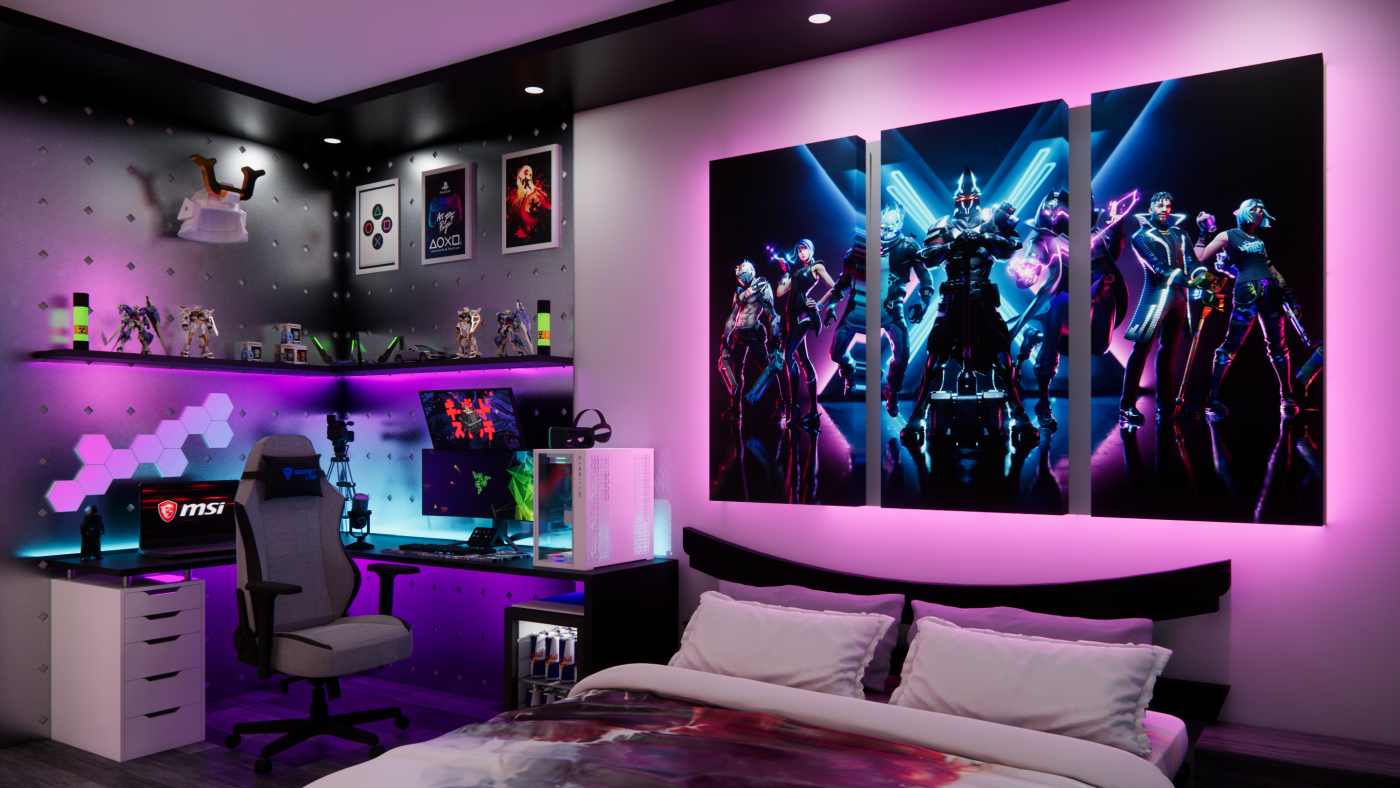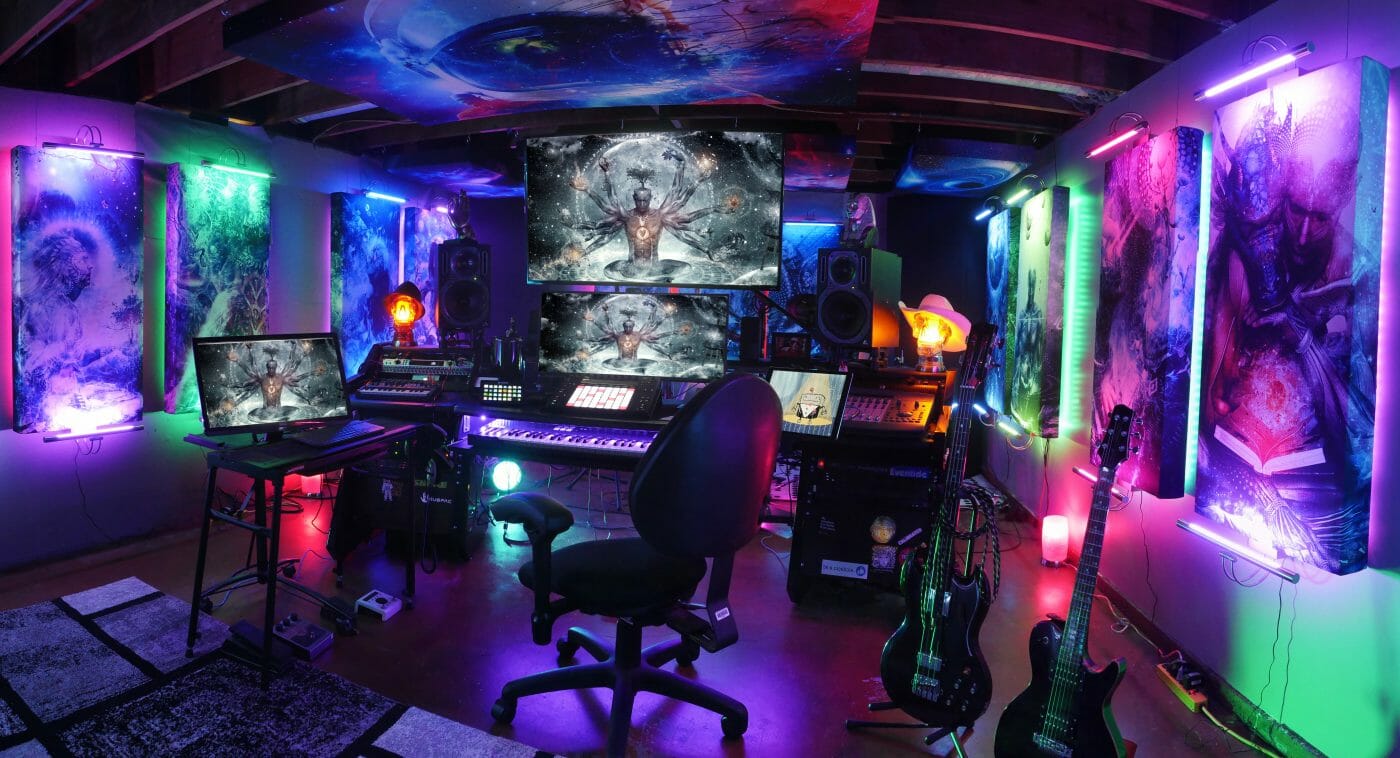News
Optimizing Acoustic Treatment for a Small Bedroom Studio

Acoustic treatment is a critical consideration in any recording or mixing environment, but its significance is amplified in small bedroom studios where space limitations pose unique challenges. Small rooms, by nature, present acoustical issues that can severely impact sound quality. However, with a well-thought-out approach and the strategic use of acoustic panels, even the most compact spaces can be transformed into acoustically sound environments. This article explores the importance of acoustic panels in small bedroom studios and offers insights into the best practices for acoustically treating such challenging spaces.
Understanding the Challenge
Small bedroom studios, often embraced by budget-conscious musicians as well as podcasters & streamers, present a double-edged sword. On one hand, their intimate size can create a cozy and inspiring atmosphere. On the other hand, these rooms can become sonic nightmares, plagued by issues such as excessive reflections, standing waves, and bass buildup due to their confined dimensions. This is precisely why small rooms are considered mathematically the hardest to treat acoustically.
The Significance of Acoustic Panels
In small bedroom studios, where square footage is at a premium, every element of acoustic treatment must be carefully considered. Acoustic panels emerge as indispensable tools for tackling the unique challenges of these spaces. Here’s why they are paramount:
- Reflection Control: Small rooms amplify sound reflections, leading to comb filtering and an unclear listening environment. Acoustic panels placed strategically on reflection points – typically walls, ceiling, and floor corners – absorb and diffuse these reflections, resulting in a more accurate and balanced sound.
- Standing Waves Mitigation: Small rooms are prone to the formation of standing waves, where certain frequencies resonate excessively. Placing bass traps, which are a specific type of acoustic panel, in room corners can help counteract these issues, leading to a flatter frequency response.
- Improved Mixing and Recording: For bedroom studios often used for both recording and mixing, proper acoustic treatment is crucial. Acoustic panels can create a controlled, neutral space where what you hear accurately represents your recordings. This leads to better mixes and more informed musical decisions.
Strategies for Small Bedroom Studios
- Strategic Placement: Identify primary reflection points and place acoustic panels there. Start with the first reflection points on the sidewalls and expand to include the ceiling and floor, as needed. Bass traps in room corners also help address low-frequency issues.
- Aim for Balance: Strive for a balance between absorption and diffusion. While it’s tempting to cover every surface with panels in a small room, excessive absorption can lead to a dead, unnatural sound. Carefully select panel types and densities based on your room’s unique needs.
- Monitor Placement: Consider the positioning of your studio monitors. Placing them correctly can minimize some acoustic issues, reducing the reliance on extensive panel coverage.
- Use Diffusion Wisely: In addition to absorption panels, diffusion panels can help disperse sound reflections more naturally. Placing diffusers strategically, especially on the rear wall, can create a more spacious soundstage. (Fun fact – furniture, as well as pretty much any object that doesn’t have many flat surfaces, act as diffusors too!)
Conclusion
In the pursuit of creating a professional-grade recording and mixing environment within the confines of a small bedroom studio, the role of acoustic panels cannot be overstated. While small rooms pose mathematical challenges, the strategic placement of absorption and diffusion panels can significantly improve their acoustics. By understanding the unique issues that small rooms present and investing in appropriate acoustic treatment, you can transform your limited space into sonically pleasing, productive havens for creativity.


